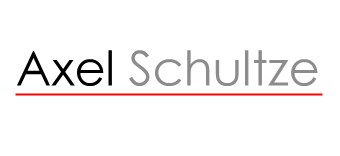SaaS is all different and so is their TCO discussion!
The discussion about the total cost of ownership for SaaS solutions is on the rise. In my last 5 years of selling SaaS solutions into corporate America – customers range from multi billion dollar global enterprises where we installed truly global solutions spanning multiple continents and even multiple external legally independent but connected organizations – the question of TCO was present, yet the conclusion may come as a surprise.
Let me start with the “good old days of IT”. Total cost of ownership was the “sum of all fears”. And they came in various flavors and shapes. The calculation typically started with server systems, backup capacity, network infrastructure, routers, hubs, cables, then of course the respective software, the operating system, the database, the applications itself, the tools, update cost, migration cost, maintenance contracts for software and hardware. Then we got more sophisticated and included air-conditioning, the floor space, energy, related facility cost and of course the personnel to run the whole show. Lately there is even more cost involved such as rising security cost, disaster recovery management related cost and also all the management overhead. As we try to customize the solution more and more – sometimes we customize us to death – we have cost that is even harder to calculate. With all that, financing the whole structure became another none negligible cost item.
To get even more sophisticated we added opportunity cost, downtime cost, resources that needed to be available in case something goes wrong. In the 90s we learned that the actual software for instance is actually just some 15% of the total cost (depending which calculation you use and which consultant you ask). And at the end we even had to purchase software that helped us to calculate the TCO which came on top of the TCO.
After about 20 years of TCO discussions it is interesting to note that there is still no generally accepted method or formula to calculate TCO in a way that we can compare values, benchmark ourselves and our vendors. Even worse – TCO became a ever more fuzzy marketing weapon with no real value associated that either financial analysts can build a judgment on, executives can base decisions on or purchases can be measured by.
Now let us look into the TCO calculation for a modern software as a service based information system: Let me take the same buckets: Server, backup, software, operating system, database, updates, migration, aircon, space, infrastructure, support, services, teams, financing and all the rest of it. Isn’t it interesting that we get all that for $20-$200 per user per month from a SaaS provider depending what we are using? What do we do at BlueRoads, Salesforce.com, Tanooma or who ever in the SaaS space for customers large or small, regardless whether it is a multi billion dollar Avaya or a 10 Million Dollar medical device startup. We, the SaaS providers, own and run the data center. We do OS upgrades; we manage the database servers and build the application around the database we choose. We do not need to worry about compatibility with 3 database vendors and their 50 different versions. We deployed the application, we provided the update, we manage the data migration at major updates, we support the user because we ARE the technical back end, we pay for energy, the server space. We do the system financing, the depreciation, the planning, the disaster recovery. The monthly software fee BECOMES the TCO unless we do something that is simply yesterday IT – we force the vendor to deploy it behind the firewall, customize it, put it on the customer’s server, and ensure compatibility to their database…
But that is NOT Software as a Service – this is an in-house web based application server, no different from any client server application.
Now the magic question: How on earth can a SaaS provider do that all for 60 bucks a month? Well if you think of it, Salesforce.com spreads their IT cost over 20,000 companies – not 1. But also for smaller SaaS companies – IT cost is may be still 1/1,000 of the cost of an internal IT organization simply by spreading it over 1,000 customers.
My conclusion – put the TCO discussion to rest (Sorry Gartner) – and may be worth mentioning there is no OWNERSHIP of the application, it is a service.


